If you live in Western Massachusetts, you might be familiar with Pat Leuchtman. She has been writing her column, Between the Rows, for The Greenfield Recorder since 1980. (WOW! — do the math — that is IMPRESSIVE!!). Pat grows over 70 varieties of roses, and every June, she opens her garden for her Annual Rose viewing. Perhaps you might want to visit or just join Pat for a bit more garden chat. If so you can visit Pat on her lively blog, the Common Weeder. I’m handing this post over to Pat to tell us more about growing romantic roses – and I don’t mean the red roses for romantic occasion flowers – I mean the wild ramblers and shrubs that can add grace, ambiance, and timeless charm to your landscape.
– Rochelle
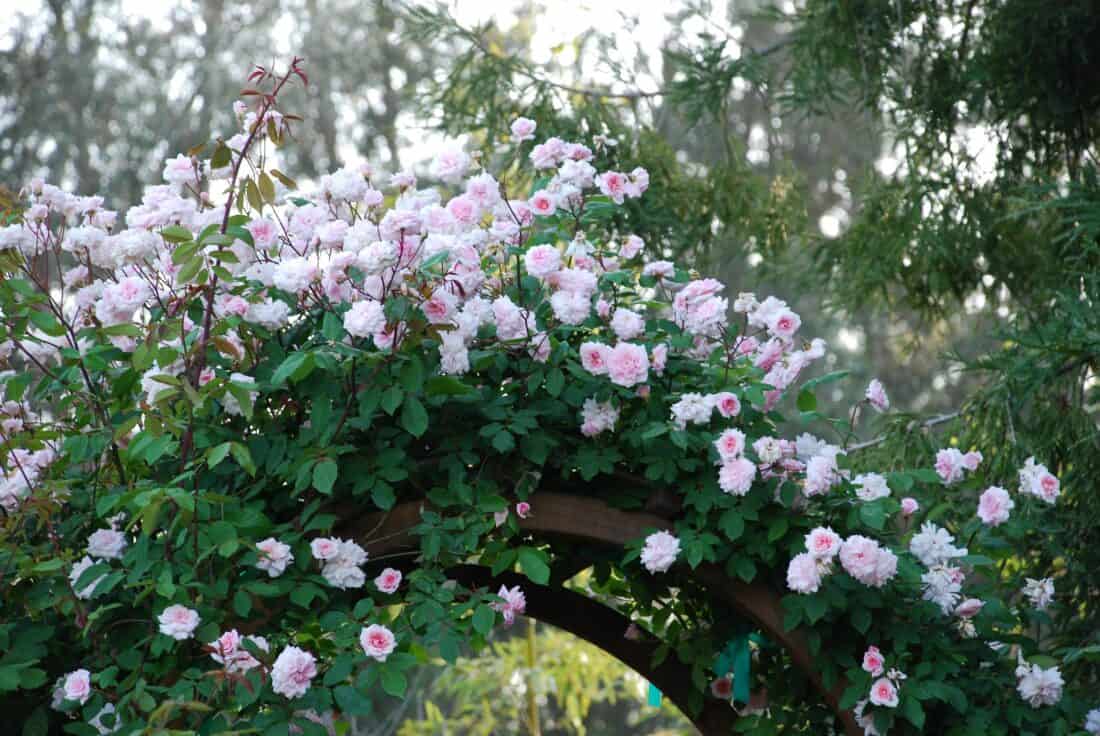
Romantic and gorgeous garden roses
Roses are among the most romantic and celebrated of flowers. Often relegated to rose-only beds, marching in straight lines where it’s easy to care for the hybrid teas that need cosseting, these beds lack the romance that appeals to me.
The rich plumy pink of Cardinal de Richelieu takes me back to the days of the three musketeers and 17th century intrigues, Ispahan flies me on a magic carpet to the gardens of Persia, while fragrant Cuisse de Nymph or Passionate Nymph’s Thigh, the rose growing by my front door, transports me to nights of romance, imaginary and real.
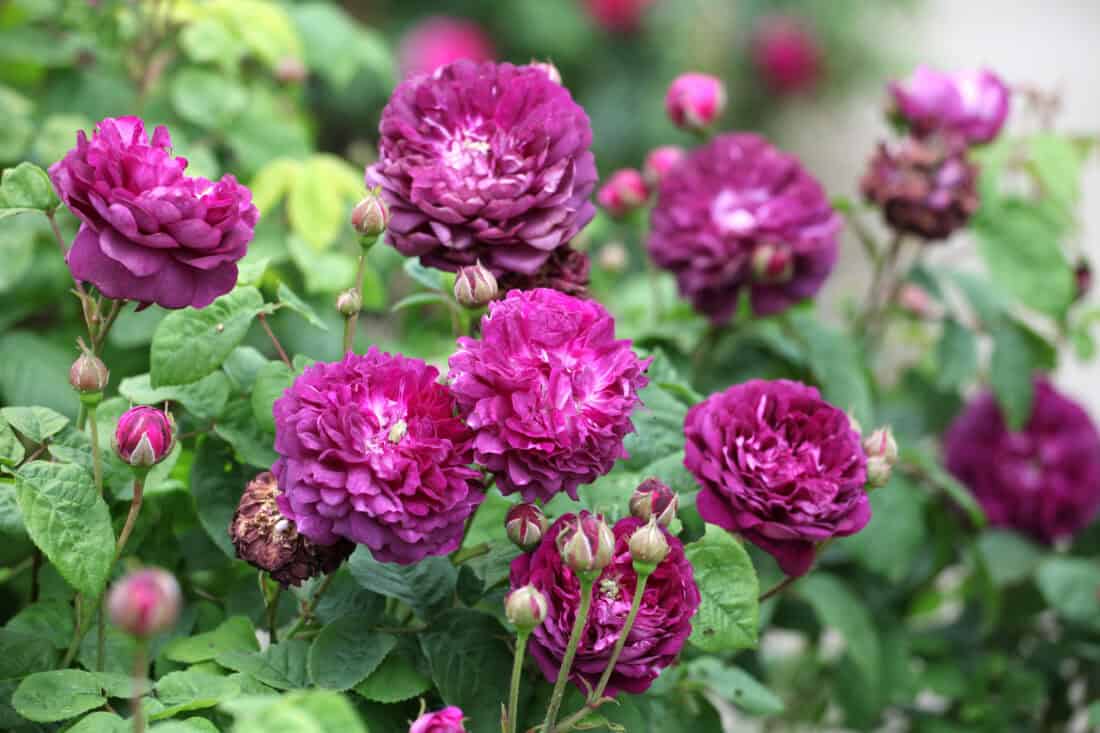
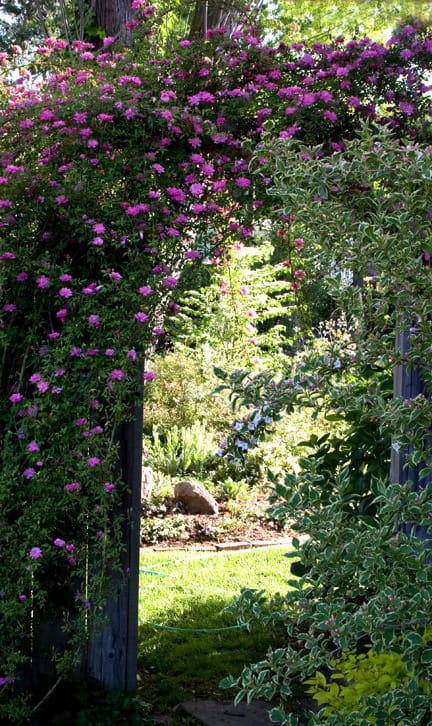
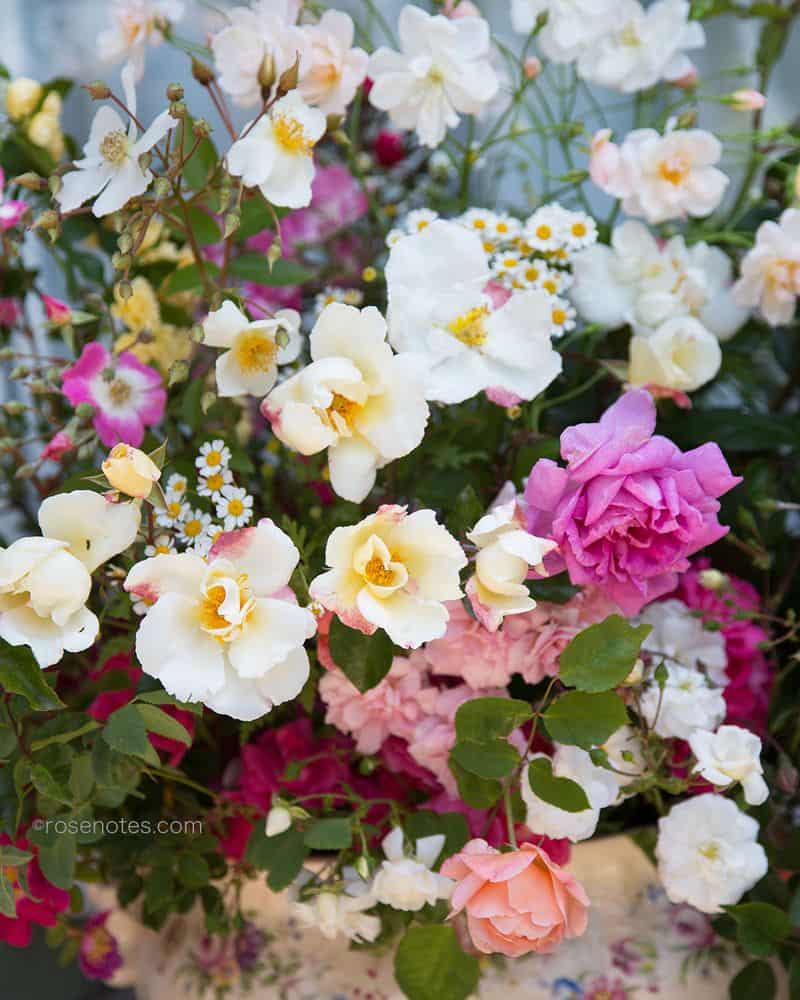
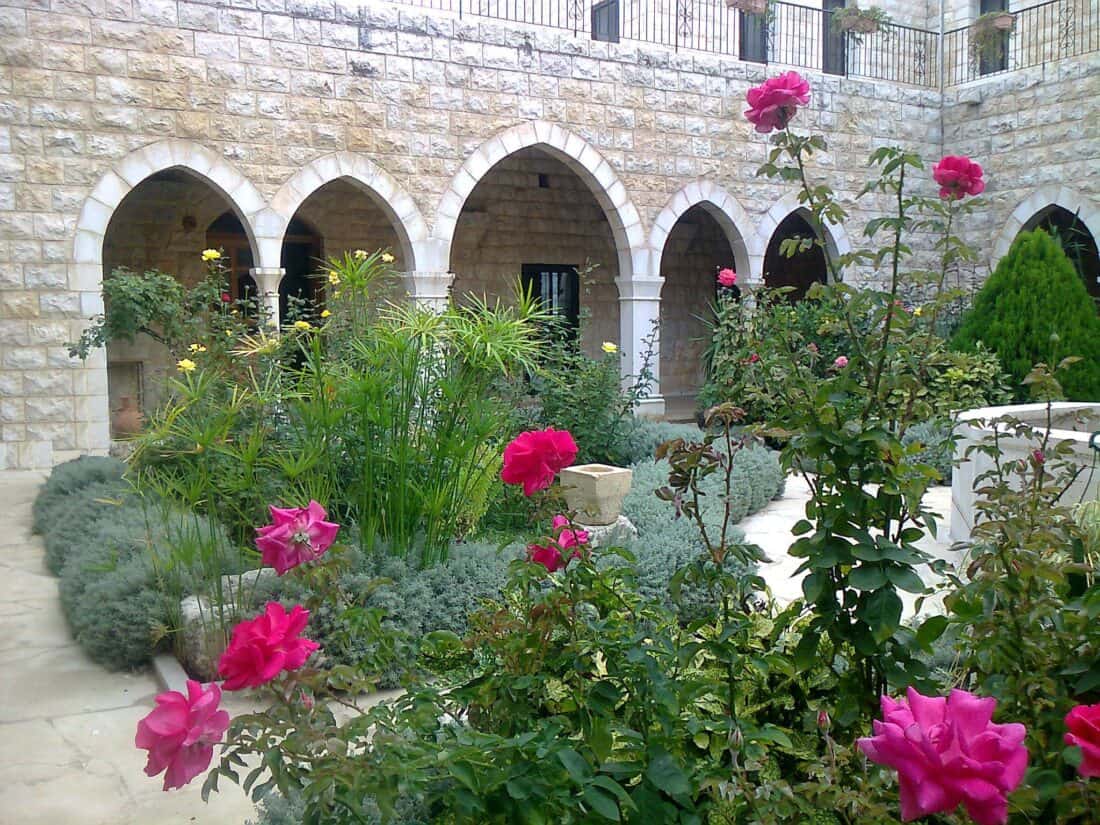
How to Grow Romantic And Climbing Roses In the Garden
Romantic roses do not grow in rows. Roses are meant to climb pergolas where friends and lovers can linger in perfumed shade. Whether the pergola is grand and serene like the one in the Idaho Botanic Garden, or a rustic arbor, a variety of climbing roses can provide shade and romance.
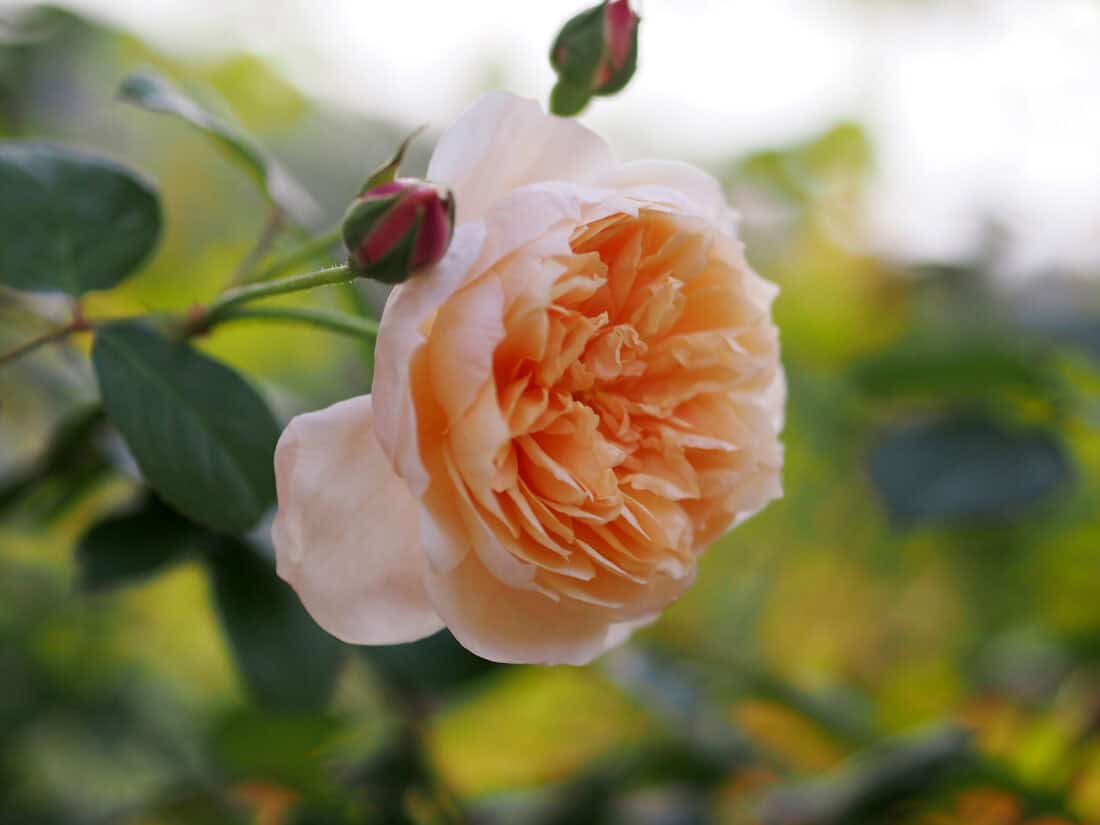
Climbing roses that bloom all season, like Dortmund, William Baffin, or Abraham Darby, are suitable for adorning a garden gate. The thing to remember about climbing roses is that they do not have any physical mechanism to keep them climbing.
They do not have tendrils like peas, or twining stems like morning glories. They do not have adhesive pads like Boston ivy or clinging stem roots like the climbing hydrangea. Climbing roses have flexible long canes that can be trained and tacked and tied to supports ranging from simple trellises, archways or pergolas.
Planting a Rose Walk
I planted a Rose Walk – because, for some unknown reason, I had stuck two tiny roses, Rosa Glauca and de la Grifferai, in the middle of the lawn and then needed logic.
I decided on a design and more roses – I now have about 60 hardy shrub roses on a 150-foot Rose Walk.
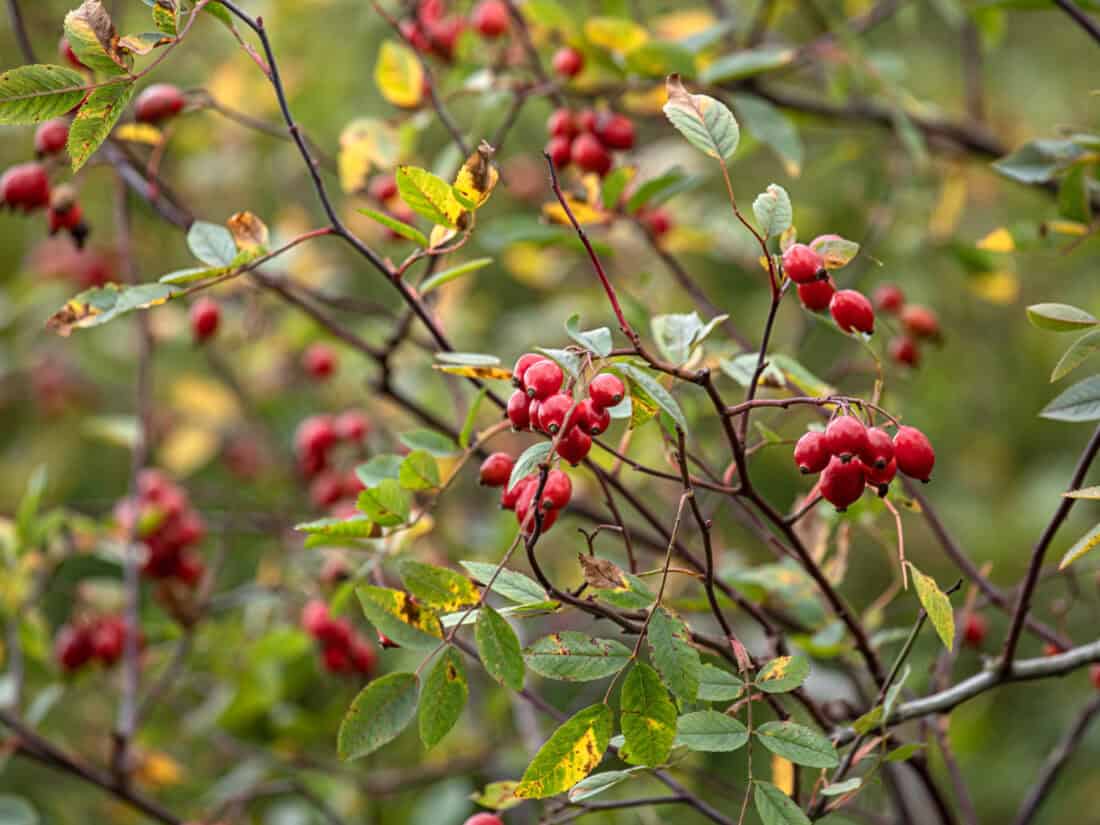
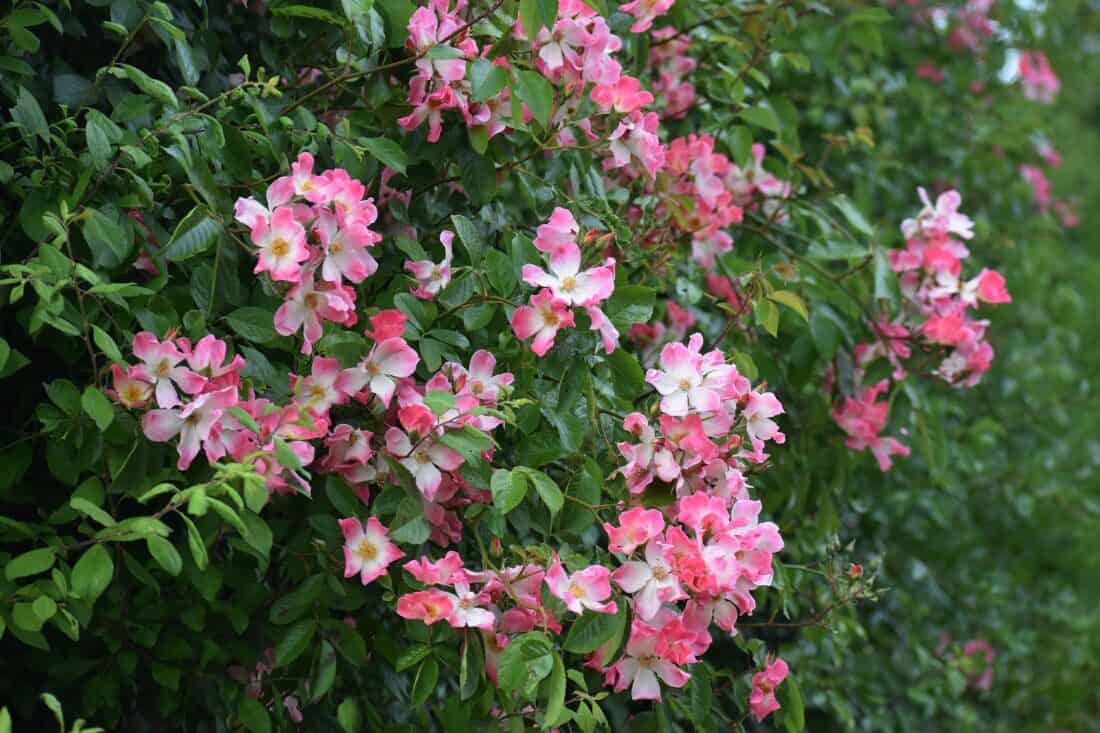
I wish I had realized what a magnificent shrub Rosa glauca was, I would have put two at the start of the Walk. What a grand entrance!
Still, I added romantic gallicas, albas, and tough rugosas. I am more partial to these than the hybrid tea rose preferred by the professional staff of floral designers. There are grand ladies like the Queen of Denmark, as well as Farmgirls, roses from neighboring farms, nameless but robust, like the spirited farm wives who tended them.
Design grows out of desire. My desire was for a romantic stroll. Desire achieved, I share it with my husband, but also with friends at the Annual Rose Viewing when we can all stop and smell the roses.
– Pat
+comments+